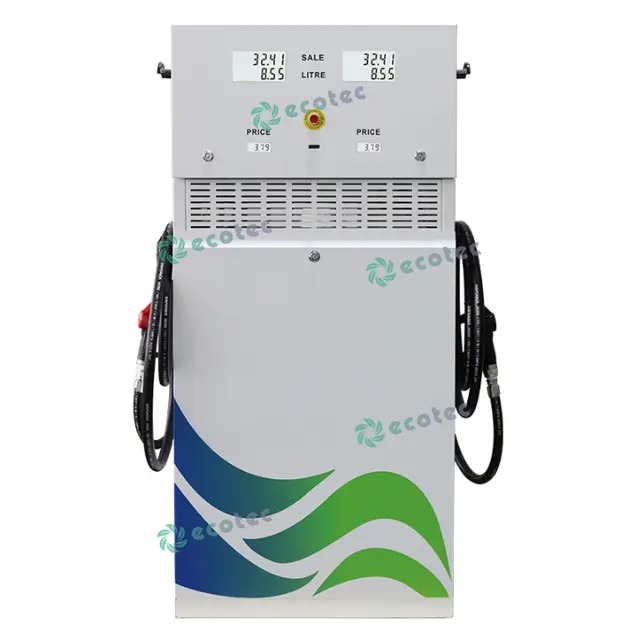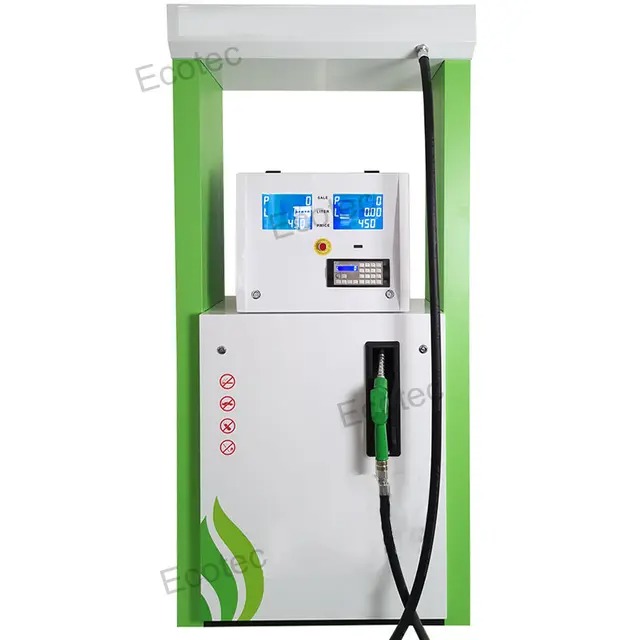Fuel dispensers, commonly known as gas pumps, are essential devices at fuel stations that deliver fuel into vehicles. Despite their ubiquity, the inner workings of a fuel dispenser are often overlooked. This article dives into the intricate mechanisms and technology that enable a fuel dispenser to work efficiently, ensuring that the right amount of fuel is dispensed safely and accurately. We’ll explore everything from the basic structure of a fuel dispenser to its key components, safety features, and advancements in fuel dispenser technology.
Understanding the Basic Structure of a Fuel Dispenser
A fuel dispenser is designed with both functionality and safety in mind. It’s a complex machine consisting of several key components, all working together to ensure a seamless fuel delivery process. At its core, the system includes a fuel pump, hose, nozzle, and a flow meter. These components are linked to the station's underground storage tanks and are controlled by an electronic system that ensures the correct volume of fuel is dispensed.
The Key Components of a Fuel Dispenser
The primary components of a fuel dispenser include:
| Component | Description |
| Fuel Pump | It generates the pressure required to push fuel from underground storage tanks to the nozzle. |
| Hose and Nozzle | Flexible tubes that deliver fuel from the pump to the vehicle’s fuel tank. The nozzle is designed to prevent fuel spillage. |
| Flow Meter | A device that accurately measures the amount of fuel dispensed, ensuring precise volume. |
| Electronic Control System | An automated system that manages fuel flow and displays pricing and volume information to customers. |
| Payment System | Allows customers to pay for the fuel, usually through card readers or mobile payment methods. |

Fuel Dispenser System Workflow
Fuel Intake: The process begins when the customer selects the fuel type and inserts the nozzle into their vehicle’s tank.
Activation: Once the nozzle is in place, the fuel dispenser is activated, either through a mechanical lever or electronic sensor.
Fuel Delivery: The fuel pump pushes the fuel through the hose, and the flow meter ensures that the correct amount is dispensed into the vehicle's fuel tank.
Shutoff Mechanism: When the tank is full or the customer stops the fueling process, the shutoff valve ensures that no more fuel flows.
By coordinating these processes, the fuel dispenser ensures accuracy, safety, and efficiency.
Fuel Dispenser Pumping Mechanism: How Fuel Reaches Your Vehicle
The heart of the fuel dispenser is the fuel pump, which is responsible for moving fuel from the underground storage tanks to the nozzle. The pump uses suction to draw fuel up and generate the necessary pressure for delivery. The system typically operates through electric motors that power the pump.
Types of Fuel Pumps Used in Dispensers
There are two main types of fuel pumps used in dispensers:
| Type | Description |
| Positive Displacement Pump | These pumps move a fixed amount of fuel with each stroke, ensuring accurate delivery. |
| Centrifugal Pump | Uses rotational force to move fuel, typically used in higher volume dispensers. |
Both pump types are engineered to provide consistent fuel delivery, but positive displacement pumps are more commonly used in modern fuel dispensers due to their precision.
Fuel Flow Control and Safety Mechanisms
To prevent overfilling, fuel dispensers incorporate several safety features. A key feature is the automatic shutoff mechanism that detects when the fuel tank is full. This is typically accomplished through a vacuum sensor in the nozzle, which triggers a valve to close when the tank reaches a certain level.
Other safety mechanisms include anti-drip valves that prevent fuel leakage after the nozzle is removed, ensuring a clean and safe refueling process.
The Role of Flow Meters in Fuel Dispensers
Flow meters are crucial for ensuring accurate fuel measurement. These devices measure the volume of fuel dispensed into the vehicle and display this on the digital screen at the pump. The accuracy of flow meters is vital for both customers and fuel station operators, as it ensures fair transactions and prevents any discrepancies in fuel delivery.
How Flow Meters Work
Flow meters generally operate on one of three principles:
Positive Displacement: This type of meter measures the volume of fuel by counting the number of fixed-volume chambers the fuel passes through.
Turbine Meter: This meter uses a rotating turbine to measure flow speed, which is then translated into volume.
Electromagnetic Meter: Uses the principle of electromagnetic induction to measure the flow rate without any moving parts, offering high precision.
Among these, positive displacement meters are the most common in fuel dispensers due to their accuracy and reliability.
Digital Displays and Payment Systems in Fuel Dispensers
Modern fuel dispensers come equipped with digital displays that provide customers with vital information, such as the volume of fuel dispensed and the total price. These displays are powered by the dispenser’s internal electronics, which also manage the payment system.
The payment system can accept various methods, including credit/debit cards, mobile payments, and even contactless options. This convenience allows for a quick, efficient transaction without the need for manual intervention.
Digital Controls and User Interface
The digital interface allows customers to interact with the dispenser, selecting their preferred fuel type and viewing the transaction details. Operators can also monitor dispenser activity remotely to ensure the system functions smoothly and troubleshoot any issues.

Fuel Dispenser Technology: Advancements in Efficiency and Safety
Fuel dispenser technology has evolved considerably over the years. Today's dispensers are designed to be more efficient, user-friendly, and safe. From enhanced filtration systems that prevent impurities from entering the fuel to advanced leak detection mechanisms, these dispensers are much more reliable than their predecessors.
New Innovations in Fuel Dispenser Technology
Some of the key technological advancements include:
| Technology | Description |
| Smart Dispensers | These dispensers feature sensors that monitor fuel levels in real-time and alert station operators of any issues. |
| Integrated Payment Systems | More fuel dispensers are adopting integrated payment solutions like Apple Pay, Google Pay, and contactless options. |
| Leak Detection Systems | These systems continuously monitor for leaks and notify operators immediately if any are detected, reducing environmental impact. |
These advancements contribute to smoother operations, enhanced safety, and a better user experience for both customers and fuel station operators.
Conclusion
Fuel dispensers are essential tools that ensure a safe, efficient, and accurate refueling experience. Their intricate design combines mechanical, electronic, and safety components, all working together to deliver fuel in a controlled manner. From the fuel pump to the flow meter and digital payment systems, each part plays a crucial role in the dispenser’s functionality. As technology continues to evolve, fuel dispensers are becoming more reliable, safe, and convenient, meeting the growing demands of modern fueling stations.
FAQ
1. How do fuel dispensers know how much fuel to dispense?
Fuel dispensers use flow meters to measure the volume of fuel that passes through the system. These meters are calibrated to ensure accurate readings, so the customer receives the exact amount of fuel they’ve paid for.
2. Are fuel dispensers safe?
Yes, fuel dispensers are equipped with multiple safety features, including automatic shutoff valves and leak detection systems, to ensure safe and controlled fuel delivery.
3. What happens if a fuel dispenser malfunctions?
If a fuel dispenser malfunctions, station operators are usually alerted through the dispenser’s internal monitoring system. This allows them to quickly address any issues before they affect the customers or the fuel station’s operations.
4. Can fuel dispensers accept digital payments?
Many modern fuel dispensers are equipped with integrated payment systems that allow customers to pay via credit cards, debit cards, and mobile payment methods such as Apple Pay or Google Pay.
5. How often should fuel dispensers be serviced?
Regular maintenance is essential to ensure that fuel dispensers continue to operate efficiently. Depending on the station’s usage, dispensers should undergo servicing every 6 to 12 months to check for any mechanical or electronic issues.
















